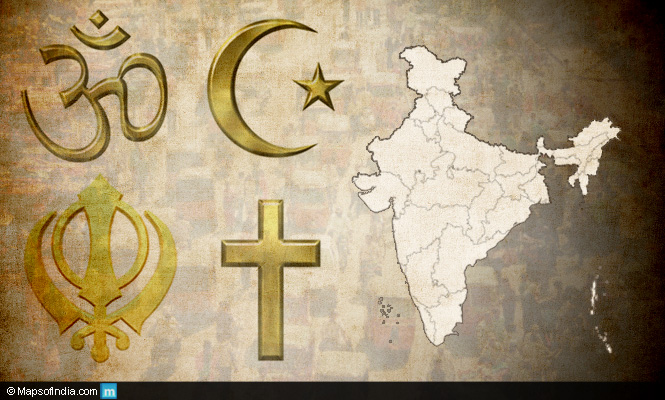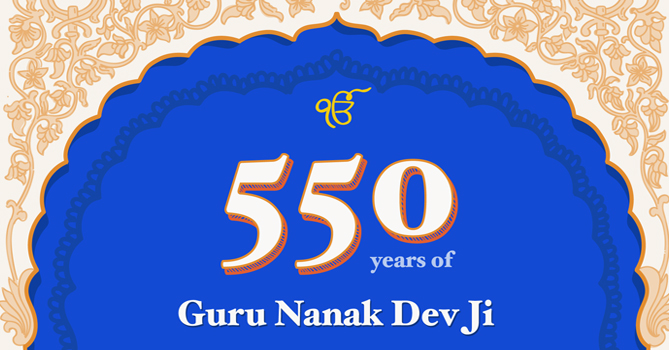 It has been stated in the Constitution of India that one of the fundamental rights of the people of India is the freedom of religion. In 1947 India got independence and the Constitution in 1950 declared India as a secular State. According to secularism, every citizen of the country has a fundamental right to practice his or her religion peacefully.
It has been stated in the Constitution of India that one of the fundamental rights of the people of India is the freedom of religion. In 1947 India got independence and the Constitution in 1950 declared India as a secular State. According to secularism, every citizen of the country has a fundamental right to practice his or her religion peacefully.
However, we have been hearing a number of incidents of religious intolerance that have led to riots and violence in our country from a very long time. The recent news of Muslims being converted to Hindus in Agra has really heaped a great deal of controversy. Everyone has a right to follow his religion as per his birth or as per his wish. It’s the constitutional right to choose his or her own religion, but making people forcibly change their religion or luring people to change their religion should be considered as crime.
India has five major religions – Hinduism, Islam, Jainism, Buddhism and Sikhism, where Hindus form 80% of the population and others are the minorities. There are also States in India with majority populations of other religions like in J&K, where we have Muslim majority, Punjab with Sikh majority, and Mizoram, Nagaland and Meghalaya with Christian majority and so on.
What is religious conversion?
Religious conversion means adopting a new religion, a religion that is different from his previous religion or religion by his birth. There are various reasons for which people convert to different religion:
- Conversion by free will or free choice
- Conversion due to change of beliefs
- Conversion for convenience
- Conversion due to marriage
- Conversion by force
Religious conversion in India
In ancient history literature, we have come across religious conversions in India. For instance, when Brahmanism was propagated in India, there were many others, like Ashoka the Great and Mahavira, who promoted Buddhism and Jainism. Emperor Ashoka sent ambassadors to various parts of the country and foreign kingdoms and he himself undertook religious journeys to inspire others to take up Buddhism. After the advent of the Mughal emperors, Islam was propagated. During the 15th century, Sikhism also came into existence. Christianity in India traces back to the coming of Saint Thomas, the Apostle in India, around 48 AD. The British Government also promoted Christianity. Conversion was common in India since time immemorial, some out of their own will and some out of threats. In this modern age of science and technology, this has continued even today.
Anti-conversion law in India
There were no anti-conversion laws in British India. However, many Princely States came up with on their own anti-conversion legislation like the Raigarh State Conversion Act 1936, the Patna Freedom of Religion Act of 1942, the Sarguja State Apostasy Act 1945 and many more and these were mainly against conversion to Christianity.
After independence, in 1954 the Indian Conversion (Regulation and Registration) Bill was passed and in 1960 the Backward Communities (Religious Protection) Bill was passed but both these Bills had to be scrapped off.
In Article 25 of the Indian Constitution, citizens of the country have the right to freedom to practise, profess and propagate their faith in a manner so that it does not disturb the public, the law and order and does not affect any one’s health and morality adversely. The Article 25 of the Indian Constitution is a basic human rights guarantee and as such the anti-conversion laws in India must be given its due importance.
According to the anti-conversion laws, no person can be forced or induced to be converted and this needs to be prevented. On the basis of this, we have a number of anti-conversion or so-called “Freedom of Religion” laws. Several Indian States had passed “Freedom of Religion Bills” in the past to prevent people from converting to Christianity, like as in Arunachal Pradesh in 1978, Gujarat in 2003 and Madhya Pradesh and Chhattisgarh in 2006. In 2007, Himachal Pradesh became the first Congress party-ruled State to adopt a law banning illegal religious conversions.
However, these laws considered forced conversion of religion as a cognisable offence under sections 295 A and 298 of the Indian Penal Code and it is a punishable offence, by different durations of imprisonment and fines. For others, the anti-conversion laws in various Indian States were seen as a means to promote Hindutva or the Hindu nationalism.
To Sum Up: The reason or the drive for religious conversion will remain a debated issue. Like, for instance, the recent conversions of Muslims into Hindus. Some say they, the Muslims, came on their own. Some say, they were lured to be given Aadhar cards if they converted. The latest report is that an organisation, an RSS offshoot – Dharam Jagaran Samiti, in Aligarh appealed to all Christians and Muslims to donate for conversions to Hindus at a cost of Rs 2 lakh for a Christian and Rs 5 lakh for a Muslim. Isn’ this ridiculous? We have already suffered communal and regional riots like Gujarat riots, Babri Masjid demolition, anti-Sikh riots and many more.
The blame game continues. While the present Government is now making a strong pitch for anti-conversion laws in the States and the Centre as a whole, it is as usual the common and the poor people who suffer.




